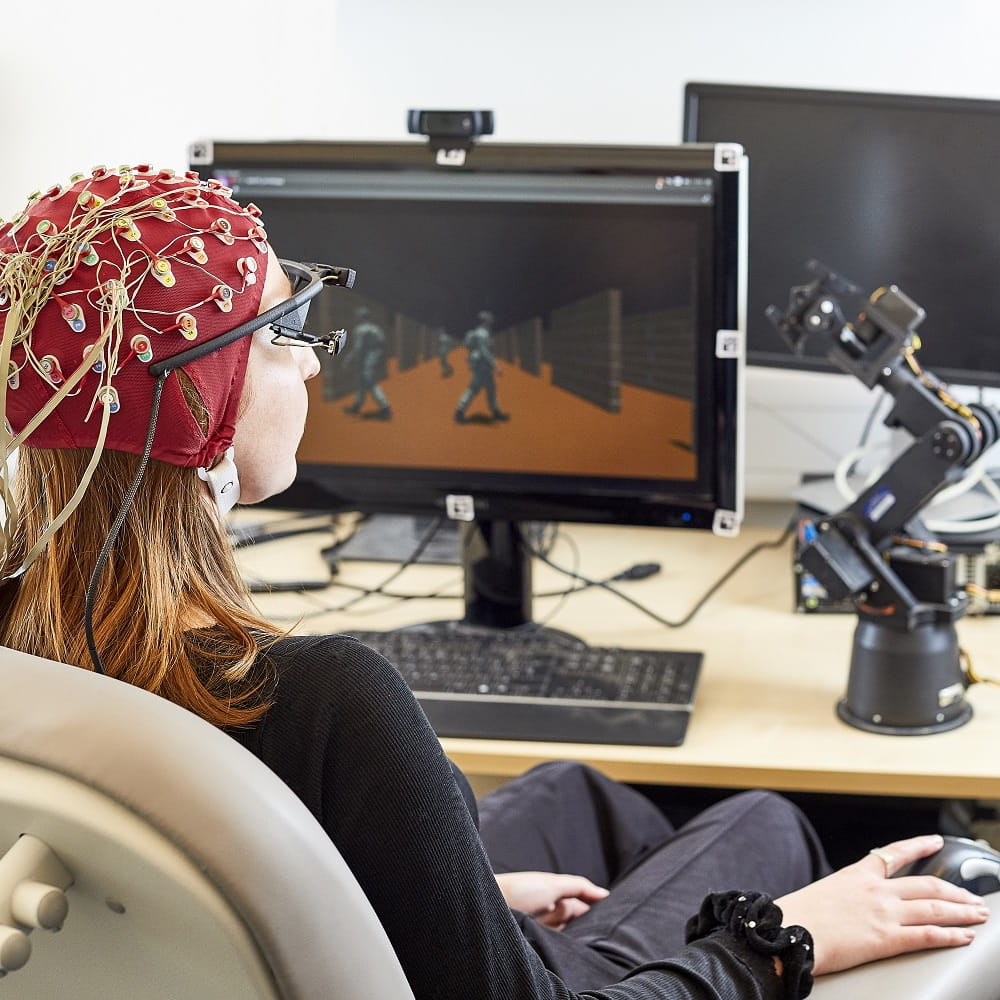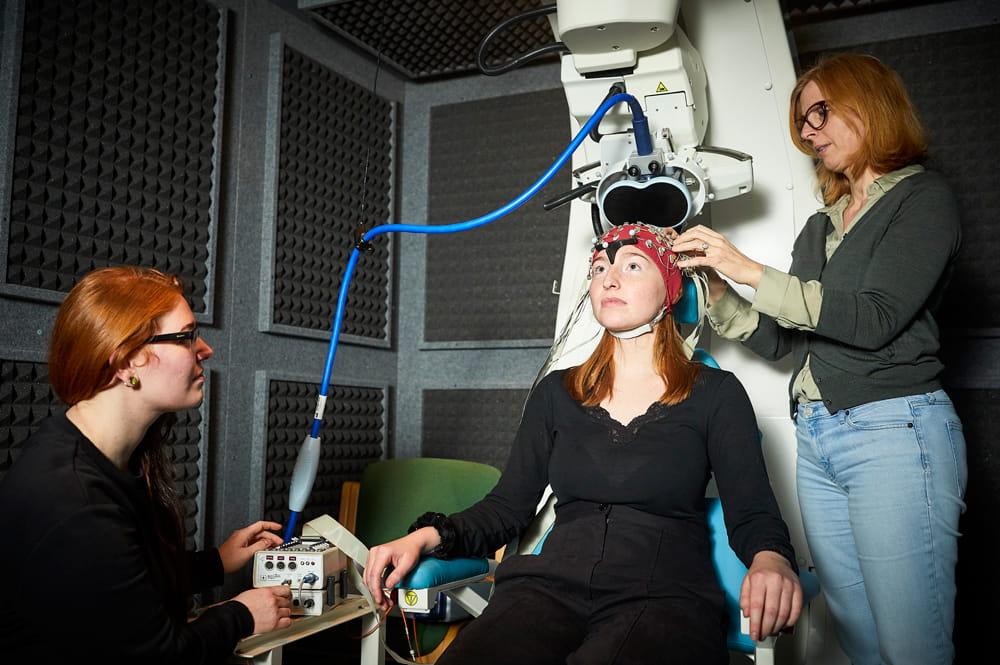The BCI-NE lab was founded in 2004 and is now one of the largest in the world and one of the best for non-invasive interfaces and cognitive augmentation.
The lab has recently acquired a new home spanning 190m² and has state-of-the-art facilities. These include:
- Three large (between 12 and 20sqm) Faraday cages
- A robotic transcranial magnetic stimulation system.
- Four BioSemi EEG ActiveTwo systems (64 and 128 channels).
- Three new mobile EEG systems.
- High-density (128-channel) sEMG systems.
- Two fNIRS systems (one capable of joint EEG acquisition).
- Four neuroConn DC-Stimulator Plus transcranial current stimulators.
- Functional electrical stimulators.
- Two 32-channel gTec EEG systems.
- A MagStim BitStim transcranial magnetic stimulator.
- Two Enobio 20-channel EEG systems (with dry electrodes).
- One 24-channel Mindset EEG system.
- One Quasar dry-electrode Bionode-H EEG system (with dry electrodes).
- One gTec g.MOBIlab+ portable EEG system.
- One Emotiv epoc EEG system.
- Respiration sensors.
- A mobile VR kit, four eye trackers.
- Motorised wheelchairs.
- Robotic arms.
- Electrophysiological sensors.
- Many computing servers with backup storage.
For nearly two decades now, the lab has produced highly visible internationally leading research, peer reviewed publications, and a frequent media presence. We collaborate with international (e.g., MIT, NASA JPL, ESA, Harvard, UCB, UCS, NYU, etc.) and national (e.g., Oxford, Imperial, UCL) partners. The lab has received funding from the UK Ministry of Defence (MoD), US Department of Defense (DoD), EPSRC, EU, and many others, having attracted awards worth £4.6M in the last 5 years only.
Thanks to this, since its inception, it has grown to become one of the four pillars of the University of Essex School of Computer Science and Electronic Engineering, which is in itself one of the largest in the UK.








